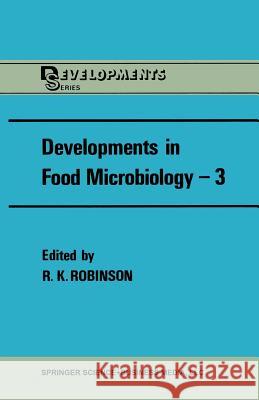Developments in Food Microbiology--3 » książka
Developments in Food Microbiology--3
ISBN-13: 9781461284208 / Angielski / Miękka / 2014 / 198 str.
The previous volumes in this series have included contributions on a varied range of topics. Some subjects were virtuaIIy self-selecting-no text on food microbiology could ignore the importance of food-borne pathogens-but others were included to iIIustrate, in some measure, the fascinating diversity of facets encompassed by the title. This same approach has been adopted in the present volume, so that while central issues, such as current views on the taxonomy of food-borne fungi, are discussed, the interfaces between 'classical' microbiology and other relevant disciplines have also been explored. The impact of economic constraints on fermentations is one such area of interaction, while the rapidly developing subject of tissue culture offers some exciting chaIIenges for any microbiologist wishing to apply his or her expertise in a somewhat paraIIel field. It can be argued, of course, that a scientific text should be held within tight guidelines, and certainly the academic demands of microbiology are becoming increasingly stringent. Nevertheless, novel ideas can often arise from a casual insight into an adjacent area of study, and it is, perhaps, appropriate that the Developments Series should find space for just a few, speculative incursions. Whatever the precise format, however, the basic intention of the series remains unaltered, and if this volume does provide food microbiologists with a useful source of information and/or further reading, then the endeavours of the authors wiII have been worthwhile.











